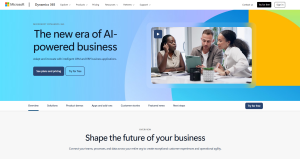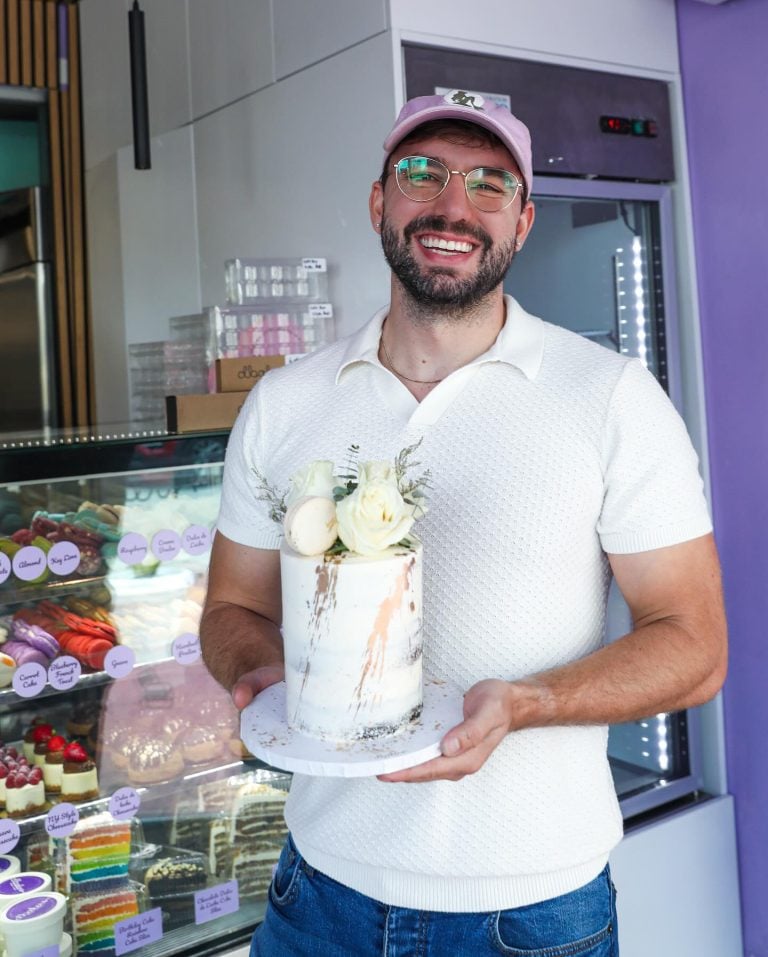In 2024, 96% of marketers spend money to reach new customers, while their existing customers slip away quietly. This costly mistake leaves billions in revenue on the table each year.
Here’s a fact: getting a new customer costs 5 times more than keeping one you already have. But many business owners ignore their past customers until it’s too late.
“Facebook retargeting ads strategy changes this equation. Think of those customers who visited your site, added items to their cart, or even made a purchase – but never returned. They’re not gone forever. They’re waiting for the right message.
In this guide, you’ll learn the exact steps to:
Set up Facebook retargeting ads that bring lost customers back.
Create messages that make past customers want to buy again.
Track your results and improve your campaigns.
Build a system that turns one-time buyers into repeat customers
If you’re tired of watching customers leave and never return, these two Facebook advertising and retargeting techniques will help you win them back – without breaking your marketing budget.

27% higher customer satisfaction
Professional delivery features:
- Real-time GPS tracking
- Automated ETA updates
- Delivery confirmation photos
- 27% higher delivery satisfaction
Step 1: Understand Facebook Retargeting Ads Basics
Retargeting helps you re-engage with users who leave your site without converting.
Facebook Pixel is key for tracking and retargeting.
Proper setup leads to pinpoint targeting and increased conversion rates.
What is Retargeting?
Retargeting is a digital marketing tactic where you reach out to users who have previously interacted with your business but haven’t yet completed a desired action, such as making a purchase. On Facebook, a retargeting strategy often involves showing tailored Facebook retargeting ads to these individuals as they browse their feeds.
The mechanics of retargeting on Facebook Ads work through tracking mechanisms. Using data from previous user interactions, Facebook allows advertisers to create specific ad campaigns aimed at those who have shown interest in their products or services but did not finalize a transaction. This process includes targeting users after they’ve visited your website, interacted with your Facebook page, or taken certain actions on your app.
Setting Up Your Facebook Pixel
The Facebook Pixel is a small code you place on your website. It gathers data that helps you track conversions from Facebook, optimize ads, build targeted audiences for future ads, and remarket to people who have already taken some kind of action on your website.
Setting up the Pixel involves generating a unique Pixel code in your Facebook Ads Manager. This code is then pasted into the header of every page of your website. It begins analyzing site visitor actions—whether they add products to a cart, browse your content, or leave without converting. This information is invaluable in refining your ad strategies and enhancing user engagement.
The significance of using Facebook Pixel cannot be overstated. Studies demonstrate that advertisers using the Pixel are seeing lower CPA rates since they cater to audiences already inclined toward their products. Plus, new features and analytics provided by the Pixel help advertisers make data-driven decisions, which modern businesses rely on.
There’s also a growing conversation around data privacy and how businesses should responsibly use the Pixel. Many are adopting more transparent data-use policies to align with evolving regulations like the GDPR. Understanding the various ad formats available can enhance your Facebook marketing strategy. For insights into the best practices, check out these effective types of Facebook ads that can significantly boost your marketing efforts.
Step 2: Define Your Win-Back Audience
Identify which lost customers are worth targeting.
Create tailored audiences for effective retargeting.
Learn detailed steps for audience creation in Facebook Retargeting Ads.
Segmenting Your Audience
To win back lost customers, start by understanding who they are. Not every previous customer is ideal for Facebook retargeting. You should focus on those who showed interest in your products but didn’t make a purchase. Also, consider those who were loyal once but stopped engaging. You can use Facebook’s audience insights tools to identify patterns. You’re looking for common behaviors and preferences to tailor your Facebook retargeting ads effectively. A study by eMarketer showed that audience segmentation can increase conversion rates by 56%. This figure highlights why knowing your audience deeply matters.
Using Audience Insights
Facebook’s tools provide valuable data about your past customers. Consider engagement levels, purchase histories, and interaction types. You can use these insights to break your audience into segments. Effective use of these tools means you can not only target people but engage them with personalized content.
Creating Custom Audiences on Facebook
Creating a custom audience on Facebook is straightforward yet detailed. You can begin by accessing Facebook’s Audiences page through Ads Manager. Click on “Create a Custom Audience.” You’ll then select a source for your audience. Your source might be website traffic, customer list, or interactions with your Facebook page. Next, you can set up specific rules. Rules include events you wish to track and how long you’ll retain users within this audience. Naming each audience is vital for keeping track of your campaigns. Clear naming ensures you know exactly which segment you’re engaging with at any moment.
Refining Audience Criteria
Consider refining your audience further. Different methods are available, such as targeting based on website interactions or specific customer lists. For website audiences, you can segment users who visited certain pages or those who spent a lot of time on your site. For customer lists, you can upload files with customer data, like emails or phone numbers, which Facebook will match to profiles. Engagement custom audiences allow targeting a specific page based on previous interactions with your content. These options give you control over who sees your Facebook retargeting ads, making sure your ads reach those most likely to convert.
Step 3: Develop Effective Facebook Retargeting Campaigns and Strategies
Make your ads grab attention with personalized content.
Learn how to use dynamic ads to boost sales.
Create ads that talk directly to your audience.
Crafting Your Ad Content
To create successful Facebook retargeting ads, you need to start with great content. The website visitors’ main aim is to grab the attention of those who visited but didn’t convert. Your Facebook retargeting ads should speak directly to them. If you’re interested in expanding your knowledge further, check out this insightful resource on creating effective Facebook Ads campaigns that can set you up for success.
As you strategize, understanding the landscape of Facebook marketing is essential. Learning how to design targeted campaigns can significantly enhance your outreach. For a deeper dive into effective Facebook advertising strategies, explore this essential guide on effective Facebook Ads strategies that can empower your marketing efforts.
Think of why they might have left. What was missing? Address this directly. You can focus on personalized messaging. It is better to use language that resonates with different segments of your audience. Customize the message based on past interactions. This creates a connection, making users more likely to engage.
Personalized messages boost engagement. Personalized ads tend to be more effective. They result in higher click-through rates (CTR) and more conversions. Jesse Perreault of Car Loans Canada advises, “Ensure that remarketing ads are distinct from those used in prospecting campaigns. Retargeting the user’s intent is crucial.”
Now, design your ad visuals to catch the eye. You can use high-quality images or videos. You should make sure that the visuals match the message. The brand colors and style should be consistent. Look into using carousel video ads to show multiple products or benefits. This keeps the viewer interested longer.
Using Dynamic Ads for Retargeting
Dynamic Ads automate personalization. They display products or services a user previously viewed. This is crucial for large inventories where manual ad creation would be time-consuming. They also create dynamic ads that adapt based on user interactions, showing the most relevant products.
Dynamic ads are not just convenient; they’re effective. They increase brand recall and offer a personalized experience StackAdapt Blog. They drive purchases because viewers see what genuinely interests them.
Step 4: Optimizing Facebook Ad Campaigns for Retention
Improve retention by testing ads.
Spend wisely with budget tips.
Pick the best bidding strategy.
Testing and Measuring Ad Performance
Effectiveness in ad campaigns rests heavily on testing and measuring performance. You can start by identifying key metrics central to campaign success—engagement rates, click-through rates, and conversion rates tell you a lot. Engagement rates measure how users interact with your ad. Click-through rates show how many people click your ad to visit your site. Conversion rates indicate whether users take action after clicking. Establish a baseline for these metrics early. This will help in assessing the impact of any changes you make later.
Now, dive into A/B testing. A/B testing involves comparing two versions of an ad to see which performs better. Change one element at a time. For example, you might test different images, headlines, or calls to action. Keep the rest of the ad the same to understand the effect of this one change. You should run these tests for a sufficient period to gather meaningful data. Even after initial success, continue testing to maintain ad effectiveness as audiences evolve.
Key Metrics to Monitor for Campaign Success
Keep a close eye on specific metrics. Engagement rates show how your audience interacts with your content. If they’re low, rethink your message or visuals. Click-through rates reflect how compelling your ad is in prompting people to learn more. Low rates might mean the offer isn’t clear. Finally, conversion rates tell you if users take action after clicking. Low conversion rates may indicate mismatched landing pages or weak calls to action. By focusing on these metrics, you can adjust strategies to meet campaign goals.
A/B Testing Different Ad Creatives and Strategies
When conducting A/B tests, maintain consistency. Change only one variable at a time in your ad creative or strategy. This could be a color, image, headline, or copy segment. It is better to explore different combinations gradually. Allocate equal budget and time to each variant for fair results. Always use insights from your key metrics to determine winning variants. Consistent A/B testing helps ensure you keep refining strategies to suit audience preferences over time.
Budget Allocation and Bidding Strategies
Effectively managing your ad budget is crucial for maximizing returns. Start by setting clear budget limits based on overall marketing goals. Use a mix of fixed and flexible budgets. Fixed budgets control spending on a daily level, while flexible budgets allow more adaptive spending when certain ads perform well. This keeps your campaigns responsive and cost-effective.
Now let’s consider the different bidding strategies. You can start by weighing spend-based vs. goal-based strategies depending on your campaign objective. Spend-based bidding focuses on using your full budget to get the most reach possible. Higher volume and value bidding target both large audiences and niches, respectively. If your priority is cost efficiency and specific outcomes, focus on goal-based bidding strategies. These include cost-per-result and return on ad spend (ROAS) goals, which align spending with anticipated returns.
Tips for Efficiently Managing Your Ad Budget
To maximize ad spend, utilize automated tools within Facebook. Features like bid caps prevent overspending on leads. Exploit lifetime budget strategies for longer campaigns. This allocates your spending effectively across the campaign lifespan. Monitor cost trends and adjust spending based on day-to-day performance. Automated rules also help with quick adjustments. Set thresholds for budgets, ensuring that any surges or falls are managed promptly without manual oversight.
Choosing the Right Bidding Strategy for Your Goals
Selecting the right bidding strategy aligns with your campaign goals. For broad goals like brand awareness, use highest-volume bidding. It ensures your ad reaches a large audience. For more targeted conversions, opt for cost-per-action (CPA) bidding or ROAS goals. These strategies tailor your spending to achieve specific actions or profitable returns. Implementing these strategies effectively requires continuous tracking and strategy adjustments in response to real-time performance data.
Step 5: Leveraging Data for Customer Win-Back
Learn to read customer trends to improve your approach.
Discover the perks of syncing your CRM data with Facebook.
Turn insights into stronger outreach efforts.
Analyzing Customer Behavior and Feedback for Facebook Retargeting Campaigns
Understanding customer behavior and gathering feedback is key to regaining lost customers. You can start by looking at data from previous campaigns. This data can show patterns and preferences. It is better to use tools like Google Analytics to track user interactions on your website. Study how they engage with different parts of your Facebook retargeting ads. Look for patterns in clicks, comments, and shares. Noticing these trends can help predict what might attract them back to your products or services.
You shouldn’t stop with just the data from analytics tools. You can go a step further with customer feedback analysis. Techniques like thematic analysis can help categorize feedback into themes to see common concerns or likes. Sentiment analysis can help measure the emotional tone behind feedback. Text mining can pick out frequent words or phrases your customers use. These insights make it clearer what changes or improvements are needed. For example, if a large group of customers mentions long delivery times, it’s a sign to improve logistics. Addressing such feedback makes your outreach more effective.
Timing Your Win-Back Efforts
Focus your win-back campaigns on timing. Research shows that 28% of Facebook retargeting campaigns work one month after a customer leaves. This interval helps customers reflect on their experience and become open to your renewed efforts. Plan your messages and offers around this timeline. For example, you might send a compelling offer with testimonials of improved services one month after a customer churns. A balanced approach to timing can improve the chances of successfully winning back customers.
Integrating CRM Data with Facebook Retargeting Ads
Using CRM data in your Facebook campaigns can enhance the process. When CRM data is synced with your Facebook feed, you get a clearer view of each customer’s journey. This data allows for personalized ads based on past purchases or interactions. This tailored approach means customers see relevant content which increases the chance of engagement.
You can start by syncing your CRM tool, like HubSpot, with Facebook. Go to your Facebook Business Manager. Click on “Business Settings” and choose “Data Sources.” From here, you can integrate your CRM data source. Follow the on-screen instructions to complete the setup. Make sure the CRM and Facebook permissions are properly set for data sharing.
Once integrated, leverage this data for personalized retargeting campaigns. For example, if your CRM shows a customer frequently bought fitness products, use dynamic ads to showcase your latest fitness line. This personalized ad strategy builds a connection and implies that the brand understands the customer’s preferences. Personalization in win-back efforts is crucial for re-establishing relationships. You can use your data smartly, as it empowers your ads to be more than just random pitches.
Measuring the Impact of CRM-Enhanced Facebook Retargeting Campaigns
With CRM data in play, measuring campaign results becomes more insightful. It is better to use offline conversion tracking to match in-store sales or service uses back to your Facebook retargeting campaigns. This data shows a clear picture of how online efforts translate into real-world results. Analyze metrics like click-through rates, conversion rates, and sales figures to gauge effectiveness. Correctly attributing these outcomes to specific campaigns offers clarity on ROI. This understanding drives better decision-making for future marketing strategies. With these steps, you’re moving toward not just regaining lost customers, but converting them into loyal supporters, ready for bigger initiatives.
Advanced Tips for Increasing Customer Loyalty with Facebook Retargeting Ads
Ads with social proof build customer trust.
Upselling through retargeting boosts revenue.
Avoid ad fatigue to keep engagement high.
Additional Advice or Alternative Methods for Facebook Retargeting Ads
Leveraging Social Proof and Testimonials in Facebook Retargeting Ads
Social proof has become a powerful tool in advertising. It helps by using reviews and testimonials from past buyers to sway potential customers. According to current studies, 76% of consumers trust online reviews as much as personal recommendations from friends or family. This makes user-generated content a significant asset for ads.
When adding testimonials to your Facebook retargeting ads, be deliberate. Ensure they focus on common concerns or praises from customers. Real names and images can increase authenticity and reliability. Quotes that highlight specific product benefits or company virtues should be considered carefully. Additionally, consider diversifying the sources of testimonials. Include a mix of video reviews, text quotes, and influencer endorsements for a broader appeal.
Exploring Cross-Selling and Upselling Techniques with Retargeting Campaign
Cross-selling and upselling are effective strategies for Facebook retargeting custom audiences. This involves offering related products or premium versions to customers who have previously shown interest or made purchases. Companies can use data from past transactions to design ads that promote relevant products. This personalization can spur additional purchases, maximizing revenue from existing customers. It’s observed that these strategies can increase the average order value significantly, suggesting their potential when executed precisely.
Common Pitfalls and How to Avoid Them
Avoiding Ad Fatigue with Content Variety
Ad fatigue occurs when the custom audience sees the same ad too often and starts ignoring it. This can lead to decreased engagement and conversion rates. To combat this, diversify your ad content regularly. Rotate visuals, alter ad copy, and experiment with different ad formats to keep the content fresh and engaging. Introduce new design elements or offer varied perspectives of the same product. This helps maintain interest without overwhelming or annoying viewers.
Testing content variations periodically helps identify which elements resonate most with customers. Use A/B testing to determine effective combinations and switch strategies based on real-time performance data. This adaptable approach ensures that the custom audience remains intrigued and responsive to your ads.
Ensuring Audience Targeting Accuracy to Prevent Wasted Spend
Precisely defining your custom audience is crucial. Incorrect targeting leads to ads being shown to the wrong people, wasting both time and money. Utilize Facebook’s detailed targeting options to hone in on the correct customer segments. Adjust parameters such as location, interests, and past interactions to refine your audience. Consider using lookalike audiences to reach users similar to your best customers.
Rely on data analytics tools to assess the effectiveness of your targeting strategy. These insights can reveal trends and behaviors that may not be initially apparent, allowing for further refinement. Regularly review and update audience criteria to adapt to evolving market conditions and customer preferences. This ensures your advertising budget is spent efficiently and effectively.



























